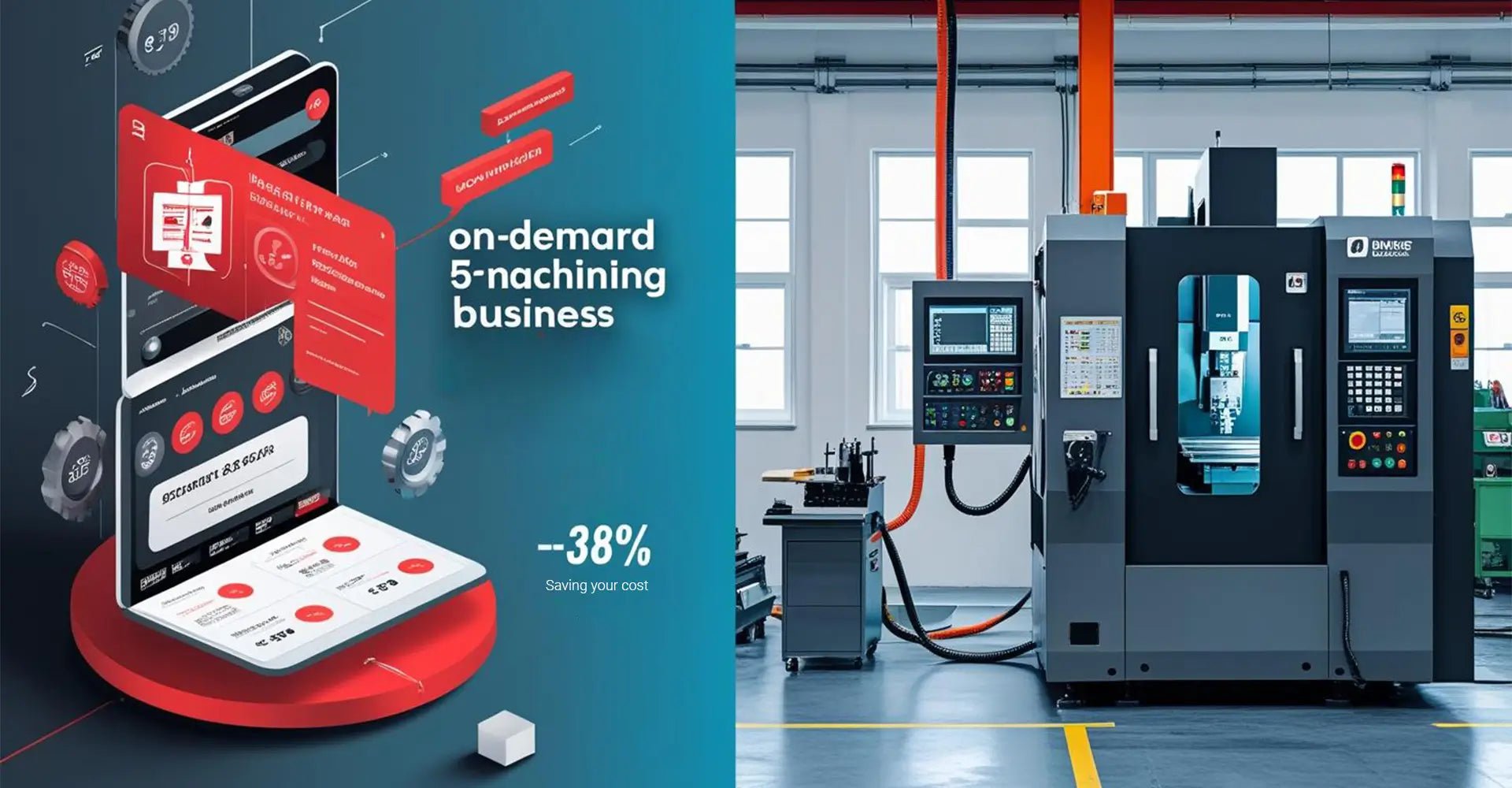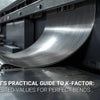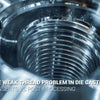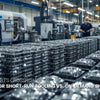How Much Does On-Demand 5-Axis Machining Really Cost When You Skip the Middleman?

How Much Does On-Demand 5-Axis Machining Really Cost When You Skip the Middleman?
Your last $2,850 platform quote for 5-axis machining could have been $1,790 if you went direct. Moreover, this isn't about finding cheaper quality – it's about understanding where your money actually goes. Furthermore, most buyers don't realize that platforms add 35-55% commission on top of actual machining costs.
Quick Cost Comparison:
- Platform Average: $2,850 (10pc aluminum bracket)
- Direct Shop: $1,790 (same part, same quality)
- Your Savings: $1,060 (38% less)
Additionally, this massive price difference isn't just about profit margins. In fact, it reveals how online platforms structure their business model around convenience fees rather than transparent pricing.
Table of Contents
- What's Behind the 58% Price Gap?
- How Do Platform Fee Structures Work?
- Why Are Direct Workshop Rates Lower?
- When Should You Pay Platform Premiums?
What's Behind the 58% Price Gap Between Platform Quotes and Direct Shop Pricing?
The staggering price difference between platforms and direct shops isn't accidental. Instead, it's a carefully designed business model that most buyers never fully understand.
The Hidden Cost Breakdown:
| Cost Component | Direct Shop | Platform | Difference |
|---|---|---|---|
| Machine Time (5hrs) | $475 ($95/hr) | $725 ($145/hr) | +$250 |
| Material (10kg Al) | $85 | $142 | +$57 |
| Setup Fees | $150 | $300 | +$150 |
| Platform Commission | $0 | $983 (45%) | +$983 |
| Total | $1,790 | $2,850 | +$1,060 |
The on-demand 5-axis machining cost structure reveals three critical markup areas. First, platforms inflate hourly rates by 53% above direct shop pricing. Second, they add material markups of 67% on common alloys. Third, they include hidden commission fees that represent 45% of the total quote.
Consequently, when you receive a platform quote, you're essentially paying for convenience rather than actual machining value. However, this convenience comes at a premium that many buyers find shocking once they understand the true breakdown.
How Do Platform Fee Structures Actually Work in 5-Axis Machining?
Platform pricing operates on a commission-based model that few buyers fully grasp. Therefore, understanding this structure helps you make better sourcing decisions.
Commission Breakdown by Platform:
- Xometry: 40-45% commission (confirmed via supplier documentation)
- Proto Labs: 45-55% commission (higher for complex 5-axis work)
- Smaller Platforms: 15-35% commission (newer market entrants)
The Xometry 5-axis pricing algorithm works by first calculating base machining costs. Then, it applies complexity multipliers for 5-axis work. Additionally, it adds material markups and shipping premiums. Finally, it includes the platform commission as a built-in cost.
Furthermore, platforms use "instant quote" algorithms that overestimate by 20-30% to cover risk. This means your 4.2-hour machining job gets quoted as 5.5 hours. Similarly, they add complexity buffers for 5-axis work that may not reflect actual requirements.
Most importantly, platforms don't disclose these markups transparently. Instead, they present a single "all-in" price that obscures the actual cost structure. This approach works for buyers who prioritize convenience over cost optimization.
Why Are Direct Workshop Rates $50 Per Hour Lower Than Platform Pricing?
Direct workshops operate with fundamentally different cost structures compared to platforms. As a result, they can offer significantly lower rates while maintaining quality standards.
Key Advantages of Direct Pricing:
- No Commission Fees: 100% of payment goes to actual machining
- Transparent Material Costs: 6061-T6 aluminum at $8.50/kg vs. platform's $14.20/kg
- Competitive Hourly Rates: $85-115/hr for 5-axis work
- Negotiable Setup Fees: Often 50% lower than platform charges
The direct CNC workshop pricing model eliminates intermediary costs entirely. Therefore, you pay actual machining costs plus reasonable profit margins. However, this approach requires more involvement in vendor management and quality control.

Additionally, direct workshops often provide better CNC machining services because they handle projects from start to finish. They also offer specialized surface finish options that platforms might not highlight in their standard quotes.
Moreover, direct shops typically work with a wider range of CNC metals and plastics without the material restrictions that platforms sometimes impose. This flexibility often results in better material selection and cost savings.
When Should You Pay Platform Premiums vs. Going Direct for 5-Axis Work?
The decision between platforms and direct shops depends on your specific project requirements and risk tolerance. However, understanding when each approach makes sense helps optimize your sourcing strategy.
Use Platforms When:
- Quantity: 1-5 prototypes with tight deadlines
- Complexity: Need integrated CAM programming and design support
- Risk: Low-stakes projects where re-makes are acceptable
- Time: Less than 72 hours for vendor research and management
Go Direct When:
- Quantity: 50+ pieces for production runs
- Cost: Budget-sensitive projects where 38% savings matter
- Control: Need direct communication with machinists
- Specialization: Require specific CNC turning or custom milling services
The hidden fees 5-axis quoting reveals that platforms work best for convenience-focused buyers. Meanwhile, direct shops excel when cost optimization takes priority over ease of ordering.
Furthermore, consider hybrid approaches for different project phases. For example, use platforms for initial prototypes to validate designs quickly. Then, transition to direct shops for production quantities where the online machining platform commission becomes prohibitively expensive.
Ultimately, the choice depends on your priorities: paying for convenience versus managing relationships for cost savings. Both approaches have merit depending on your specific circumstances and project requirements.
Conclusion
Understanding the true cost structure of 5-axis machining empowers better sourcing decisions. The 58% price gap between platforms and direct shops isn't just about profit margins – it reflects fundamentally different business models and value propositions.
Key Takeaways:
- Platform premiums range from 35-55% above direct shop pricing
- Direct shops save $50+ per hour on machining rates
- Material costs are 67% higher on platforms due to markup structures
- Proto Labs cost markup typically exceeds 50% for complex 5-axis work
- Decision factors include quantity, timeline, and risk tolerance
Smart buyers use platforms for rapid prototyping and convenience, while leveraging direct shops for production quantities and cost optimization. The key is matching your sourcing strategy to project requirements rather than defaulting to either approach.
Remember that the cheapest option isn't always the best value. However, understanding where your money goes helps you make informed decisions that balance cost, quality, and convenience for each specific project.
External Links Recommendation
For additional resources on 5-axis machining costs and vendor selection:





